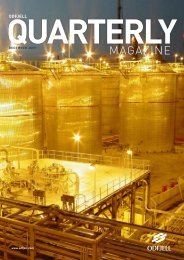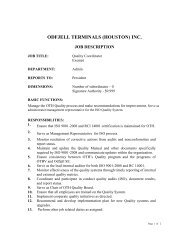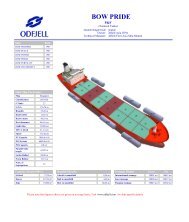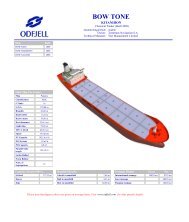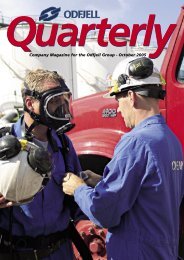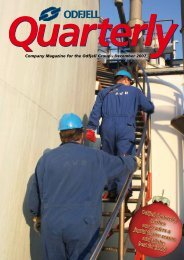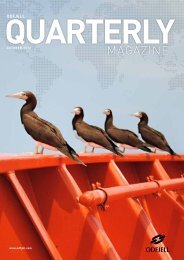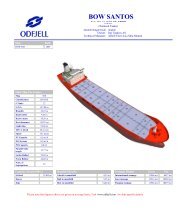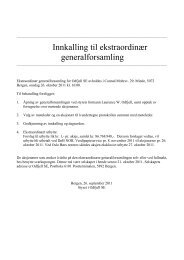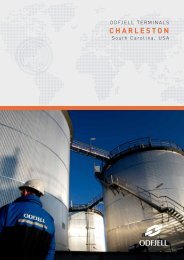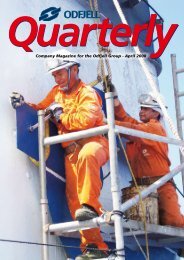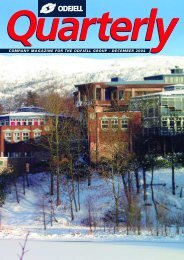You also want an ePaper? Increase the reach of your titles
YUMPU automatically turns print PDFs into web optimized ePapers that Google loves.
NR.04/ 11<br />
7<br />
Picking the low hanging fruits:<br />
– New hull cleaning and propeller polishing schemes<br />
give important fuel and emission savings<br />
By Svend Foyn-Bruun and Erik Hjortland<br />
Equipment for hull cleaning<br />
The recent trial of a new hull cleaning and<br />
propeller polishing scheme on a ship has<br />
showed very promising results. The fuel efficiency<br />
increased significantly compared to<br />
previous measurements.<br />
Although hull cleaning and propeller<br />
polishing are normal part of ordinary drydocking<br />
work, the remarkable result may<br />
lead to a new practice by which all our ships,<br />
both time chartered and owned, will be more<br />
closely monitored and the cleaning intervals<br />
shortened.<br />
Fuel and emission savings<br />
We estimate that on this particular trial ship,<br />
the new and advanced hull cleaning and<br />
propeller polishing scheme will reduce the<br />
CO 2<br />
emissions by 5,000 mt in one year.<br />
It would be hard to make an individual underwater<br />
cleaning programme for each ship, but<br />
a scheme that introduces a shorter interval<br />
compared to todays practice combined with<br />
a closer performance evaluation seem to be<br />
optimal both from an environmental and a<br />
financial viewpoint.<br />
New techniques<br />
The underwater hull cleaning and propeller<br />
techniques have improved over the last<br />
couple of years. Today it is possible to carry<br />
out the cleaning during a normal port stay<br />
without arranging for the vessel to be off hire.<br />
The ‘robotized’ hull cleaning may take place<br />
at anchorage or at cargo berths without any<br />
significant release of antifouling residues.<br />
The whole operation can be completed within<br />
12 hours. The result is a significant reduction<br />
of consumption and emissions of CO 2<br />
, NOx<br />
and SOx.<br />
odfjell quarterly magazine



